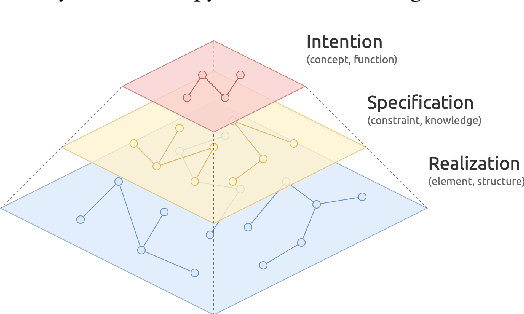Towards Top-Down Deep Code Generation in Limited Scopes
Paper and Code
Sep 04, 2022



Deep code generation is a topic of deep learning for software engineering (DL4SE), which adopts neural models to generate code for the intended functions. Since end-to-end neural methods lack the awareness of domain knowledge and software hierarchy, the results often require manual correction. To systematically explore the potential improvements of code generation, we let it participate in the whole top-down development from intentions to realizations, which is possible in limited scopes. In the process, it benefits from massive samples, features, and knowledge. As the foundation, we suggest building a taxonomy on code data, namely code taxonomy, leveraging the categorization of code information. Moreover, we introduce a three-layer semantic pyramid (SP) to associate text data and code data. It identifies the information of different abstraction levels, and thus introduces the domain knowledge on development and reveals the hierarchy of software. Furthermore, we propose a semantic pyramid framework (SPF) as the approach, focusing on softwares of high modularity and low complexity. SPF divides the code generation process into stages and reserves spots for potential interactions. Eventually, we conceived application scopes for SPF.
 Add to Chrome
Add to Chrome Add to Firefox
Add to Firefox Add to Edge
Add to Edge